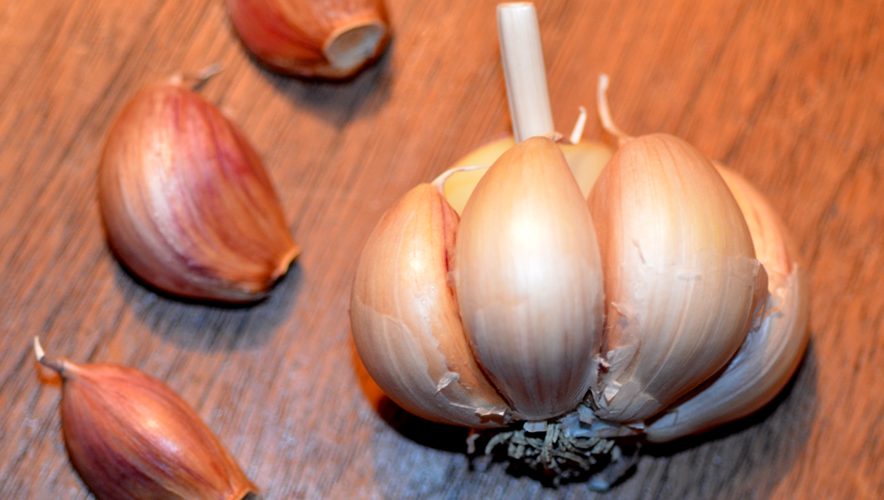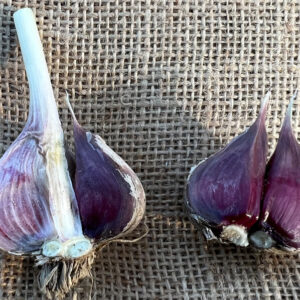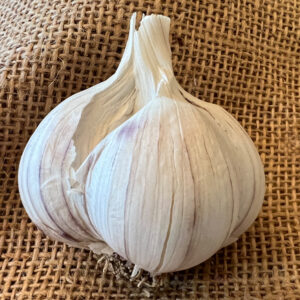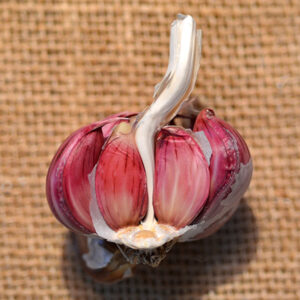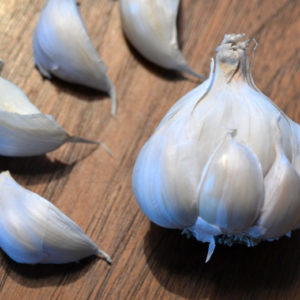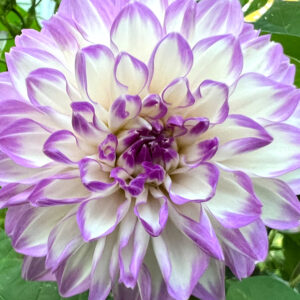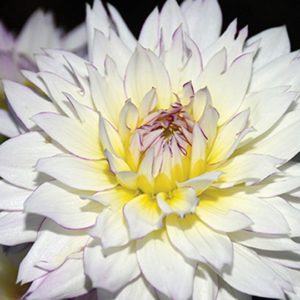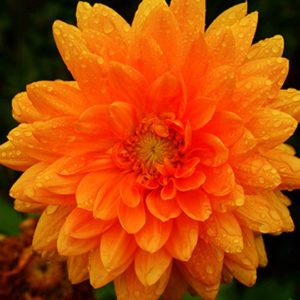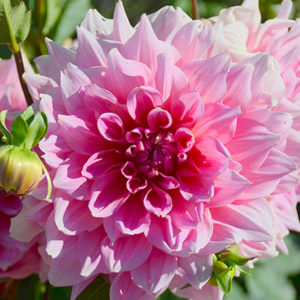Description
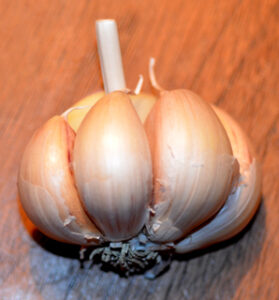 Turban Garlic, Red Janice
Turban Garlic, Red Janice
GARLIC, which is a member of the same group of plants as the ONION, has been cultivated for millennia. As a cultivated plant, it is so old that it is difficult to credit a country of origin for this vegetable. Some historians believe that onions and garlic was indigenous to the southwest of Siberia and spread to southern Europe where it became naturalized. It is widely grown in all the Mediterranean countries.
All modern garlic belongs to one of two subspecies: hardneck (ophioscorodon) or softneck (sativum). Hardneck subspecies try to produce flower stalks with small aerial cloves called bulbils. Hardnecks will not produce large bulbs underground unless the flower stalks are removed. There are seven varieties of hardneck garlic: Asiatics, Purple Striped, Glazed Purple Stripe, Marbled Purple Stripe, Porcelain, Turban and Rocambole. Softnecks have lost the ability, for the most part, to produce a flower stalk. However, under certain climatic situations, the bulbs may try to produce a flower stalk known as bolting. There are four varieties of softneck garlic: Artichoke, Turban, Silverskin and Creole.
The Turbans are an Artichoke subvariety which is slow to bolt and matures early. They should be harvested with the Asiatics. The large bulbs are striped, and the cloves are pink to brown in color. One pound of bulbs averages 60 plants.
Turbans are so named because of the shape of their flower head which forms at the end of the ‘scape’ they produce. The Turban plants do not look very robust. The stems are short, and the leaves are spaced far apart giving the plant a straggly appearance. It is not unusual for the stems to bend at the soil level and topple over as harvest time approaches.
The word best associated with Turbans is earliest. These garlics should be the first to be harvested, sometimes 3-4 weeks before the other garlics. Harvesting should take place as soon as the top two leaves begin to turn. They also have the shortest storage capability, but they are the first to sprout in the spring. Just as last year’s garlic harvest is being depleted, the Turbans arrive to quench your appetite for fresh garlic.
The Turbans are often quite beautiful with bulb wrappers heavily streaked with purple. The cloves (8-12 per bulb) are wrapped in buff colored or burgundy colored wrappers.
Turbans are quite cold hardy, but also do well in warmer climates. Their flavor is quite hot when raw, but the heat is lost when the garlic is cooked.
Planting Garlic, Shallots, Onions and Elephant Garlic

